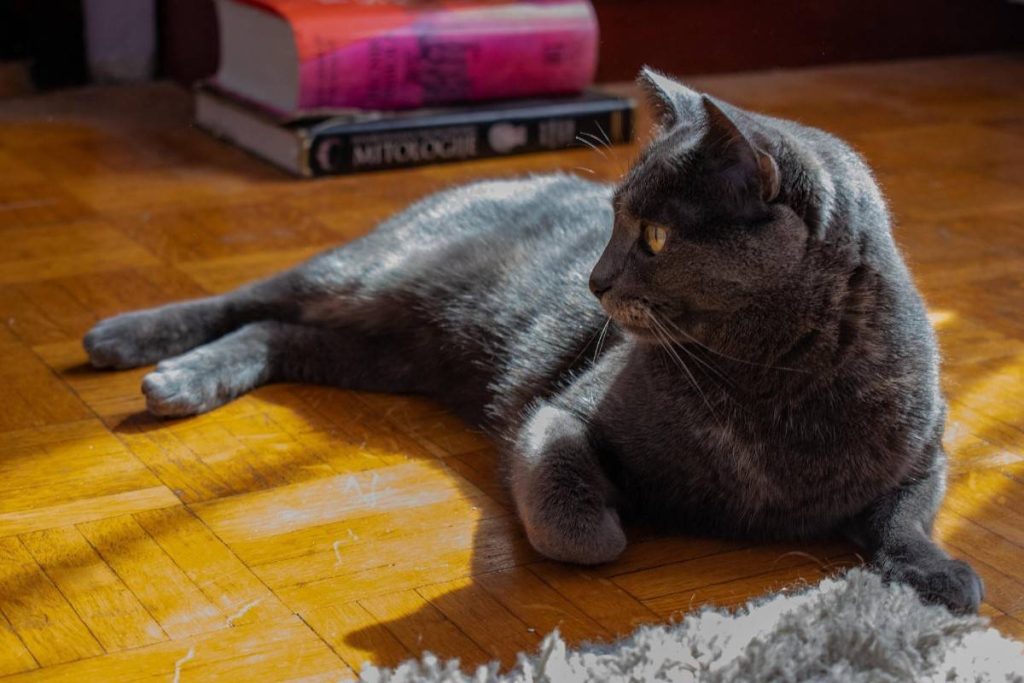The Russian Blue cat is a breed that instantly captivates with its regal elegance and gentle personality. Known for their shimmering blue-gray coats and striking emerald-green eyes, these cats carry an air of mystery and charm. But behind that sophisticated look lies a warm-hearted companion who loves forming strong bonds with their human family.
What makes Russian Blues so unique is their balance of independence and affection. They are not overly demanding, yet they thrive on love and attention. These cats are intelligent, playful, and sensitive to their surroundings, making them ideal for families, singles, and even seniors looking for a calm, well-mannered pet. Their quiet nature and adaptability make them perfect for apartment living, as they enjoy a peaceful environment without being overly shy.
In this article, we’ll explore what sets the Russian Blue apart from other breeds. From their fascinating history and personality traits to grooming needs and health care tips, you’ll discover why this breed is celebrated as one of the ultimate feline companions. Whether you’re a first-time cat owner or an experienced pet parent, this guide will help you understand if the Russian Blue is the right choice for your home.
History of Russian Blue Cat
The Russian Blue is a breed shrouded in mystery and legend. While their exact origins are unclear, they are believed to have originated in the port city of Arkhangelsk in northern Russia. Some stories suggest that these cats were favored by Russian czars and even considered good luck charms by sailors.
- Historical Significance: Russian Blues were first exhibited in cat shows in England in the late 19th century, where they quickly gained popularity for their unique appearance and gentle nature.
- World War II Impact: The breed faced near extinction during World War II, but dedicated breeders worked to revive the Russian Blue by crossbreeding with other cats like the Siamese. This effort helped preserve the breed’s distinctive traits.
- Modern Popularity: Today, the Russian Blue is a beloved breed worldwide, known for its intelligence, loyalty, and striking beauty.
Physical Characteristics
The Russian Blue is instantly recognizable thanks to its unique features. Here’s what sets this breed apart:
- Coat: The Russian Blue’s short, dense double coat is its most defining feature. The fur is a shimmering silver-blue color, with each hair tipped in silver, giving it a luminous, almost ethereal appearance.
- Eyes: Their large, almond-shaped eyes are a vivid green, which contrasts beautifully with their blue-gray coat. Kittens are born with blue eyes, which gradually change to green as they mature.
- Build: Russian Blues have a slender, muscular build with long legs and a graceful posture. They are medium-sized cats, typically weighing between 7 to 12 pounds.
- Facial Features: Their wedge-shaped head, high cheekbones, and slightly upturned mouth give them a perpetually smiling expression.
Personality and Temperament
Beyond their stunning looks, Russian Blues are known for their delightful personalities. Here’s what you can expect from these charming felines:
- Gentle and Affectionate: Russian Blues are deeply loyal to their families and form strong bonds with their humans. They are known to follow their favorite person around the house, offering quiet companionship.
- Playful and Intelligent: These cats are highly intelligent and enjoy interactive toys, puzzles, and games. They love to climb, jump, and explore their environment.
- Reserved with Strangers: While they are affectionate with their family, Russian Blues can be shy or reserved around strangers. They prefer a calm, quiet environment and may take time to warm up to new people.
- Quiet Nature: Unlike some more vocal breeds, Russian Blues are relatively quiet. They communicate with soft chirps and purrs rather than loud meows.
Caring for Your Russian Blue
Russian Blues are relatively low-maintenance cats, but they do have specific care needs to keep them healthy and happy. Here’s a quick guide:
Grooming
- Their short coat requires minimal grooming. A weekly brushing with a soft bristle brush is enough to remove loose hair and keep their coat shiny.
- Russian Blues are known for their cleanliness, so they rarely need baths. However, regular nail trimming and ear cleaning are essential.
Diet
- A high-quality, protein-rich diet is ideal for Russian Blues. Look for cat food that lists meat as the primary ingredient.
- Be mindful of portion sizes to prevent obesity, as Russian Blues can gain weight if overfed.
Exercise
- These cats are naturally active and enjoy playtime. Provide plenty of toys, scratching posts, and climbing structures to keep them entertained.
- Interactive play sessions with their humans are a great way to bond and keep them mentally stimulated.
Health
- Russian Blues are generally healthy cats with a lifespan of 15 to 20 years. However, they can be prone to certain genetic conditions, such as hypertrophic cardiomyopathy (a heart condition) and obesity.
- Regular veterinary check-ups and a balanced diet can help prevent health issues.
Why Russian Blues Make Great Pets
If you’re considering adding a Russian Blue to your family, here are some reasons why they make excellent companions:
- Low-Shedding: Their short coat sheds very little, making them a good choice for people with mild cat allergies or those who prefer a cleaner home.
- Adaptable: Russian Blues can thrive in various living situations, from apartments to larger homes, as long as they have enough space to play and explore.
- Family-Friendly: Their gentle nature makes them great with children and other pets, especially if introduced properly.
- Independent Yet Loving: While they enjoy spending time with their humans, Russian Blues are also content to entertain themselves, making them ideal for busy households.
Fun Facts About Russian Blue Cats
- Hypoallergenic Myth: While no cat is truly hypoallergenic, Russian Blues produce lower levels of the Fel d 1 protein, which is the primary allergen in cats. This makes them a better option for some allergy sufferers.
- Nicknames: Russian Blues are sometimes called “Archangel Blues” in reference to their supposed origins in Arkhangelsk.
- Celebrity Fans: This breed has been favored by celebrities and royalty alike, including Queen Victoria, who reportedly owned a Russian Blue.
Adopting a Russian Blue
If you’ve fallen in love with the Russian Blue Cat, here are some tips for finding one:
- Reputable Breeders: Look for breeders who prioritize the health and well-being of their cats. Ask for health clearances and visit the breeder’s facility if possible.
- Adoption: Check local shelters and rescue organizations. While Russian Blues are less common in shelters, it’s not impossible to find one in need of a loving home.
- Cost: Russian Blues can be expensive, with prices ranging from 800to800to2,500, depending on the breeder and the cat’s pedigree.
Final Thoughts
Owning a Russian Blue cat is like welcoming a little piece of grace and loyalty into your life. These cats are not just visually stunning—they’re also incredibly intuitive and affectionate. Their ability to sense their owner’s emotions and provide quiet companionship makes them more than just pets; they become true family members.
What stands out about the Russian Blue is their adaptability and low-maintenance nature. They don’t require excessive grooming or constant attention, making them suitable for busy lifestyles. Yet, when you do spend time with them, they reward you with affection, gentle purring, and playful antics that melt your heart. This harmonious blend of independence and love is what makes them a favorite among cat enthusiasts worldwide.
If you’re searching for a cat that brings beauty, intelligence, and loyalty into your home, the Russian Blue is a breed worth considering. With proper care, love, and attention, they can live a long, happy life by your side up to 20 years of joy and companionship. Choosing a Russian Blue means gaining a lifelong friend who will always brighten your days with their elegance and charm.
Frequently Asked Questions (FAQs)
Q1. Are Russian Blue cats good for first-time owners?
Yes! Their gentle and easygoing nature makes them perfect for beginners.
Q2. Are Russian Blue cats hypoallergenic?
They produce less of the allergen Fel d 1 compared to other breeds, making them more suitable for allergy sufferers, but not completely hypoallergenic.
Q3. How much does a Russian Blue cat cost?
On average, prices range from $800 to $1,500 depending on the breeder and location.
Q4. Do Russian Blue cats require a lot of grooming?
Not at all. Their short, dense coat needs minimal grooming just weekly brushing.
Q5. How long do Russian Blue cats live?
With proper care, they can live between 15 to 20 years.


